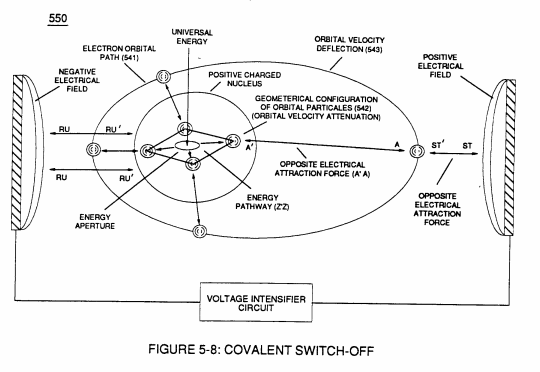Degaussing Radioactive Material
Switching-off Radioactive Substances
Atom called radio-nuclides are naturally unstable and their nuclei are constantly degenerating - giving off alpha, beta, or gamma radiation until they have achieved a stable state of equilibrium.
As they emit radiation, they change, or decay, into different isotopes (the number of neutrons continually decreasing) before the atom transmutes into another atomic element at stable state of equilibrium ... forming a newly stable atom (no longer radioactive) having the proper number of neutrons in direct relationship to a cluster of protons and electrons which are equally numbered.
Rather than the decay life-time taking place over thousands of years of time, the Atomic Degaussing Process can transmute the unstable radioactive atom into a stable atom in an instant of time.
Degaussing Radioactive Material
To degauss and consequently neutralize an unstable radioactive material consisting of atomic structures being grouped together to form molecules of different substances ... such as nuclear spent fuel rods, one must first realize that the unstable radioactive atom (s) is/are emitting a pulsating burst (s) of concentrated electromagnetic energy beyond and away from its physical atomic embodiment ... either at random or unsynchronized patterns of energy disbursement (s)... which is a condition (s) not in accordance to “Stable State of Equilibrium of a Atom.”
This unstable “State of Oscillatory Condition (s)” occurs whenever the atom (s) is/are stimulated by absorbing a quantum amount of electromagnetic energy which, in turn, causes the geometrical configuration (s) (orbital pathways) of the spin/velocity of the atom orbiting sub-particles inside the nucleus of the atom [see WFC Figure (10-6) titled “Voltage Tickling of State,” WFC Memo (429) titled “Optical Thermal Lens” as to WFC Figure (5-8) titled “Covalent Switch-off,” WFC Memo (424) titled “Atomic Energy Balance of Water”] to become unbalanced by causing a change or deflection to take place in the orbital pathways of the moving particles ... jumping particles of matter to either a higher or lower energy level... transforming the geometrical configuration (s) to an irregular shape beyond circular symmetry
... causing the space relationship between the orbital particles to become uneven and not in equal distance from each other, resulting in a physical imbalance of rotating mass ... altering the “State of Electrical Attraction Force(s) (qq’) that exists between each orbiting particle (s) in its electrical intensity
... which, in turns, causes “Oscillatory Action” of the “Energy Aperture” of the atom (s) being subjected to and interacting with the resultant variable “Electrical Intensity” occurring within the “Energy Spectrum of the Atom.”
Whenever “Electrical Intensity” variance occurs due to this “Wobbling Effect” of the gyroscopic attenuation of spinning mass within the nucleus of the atom, a given amount of electromagnetic burst of energy is released from the destabilized (unstable) atom during each cycling mode or more aptly put “gyroscopic spiking.”
This emission and propagation of electromagnetic energy in the form of rays, waves, or particle (s) (known collectively as nuclear radiation by way of atomic decay) to bring about “atomic restabilization” is an on going process until the atom (s) reaches “Stable State of Equilibrium” by either the process of the “Transmutation of the Elements,” atomic decay, or by eliminating the unbalance electrical state of condition (the Wobbling Effect) of the atom.
In such cases, “Ringing” the destabilized (radioactive) atom by pulsating electrical stress under atomic resonant conditions can bring about “Atomic Stabilization” of the unstable radioactive atom
... switching-off and preventing further emission of nuclear radiation for atom reuse.

